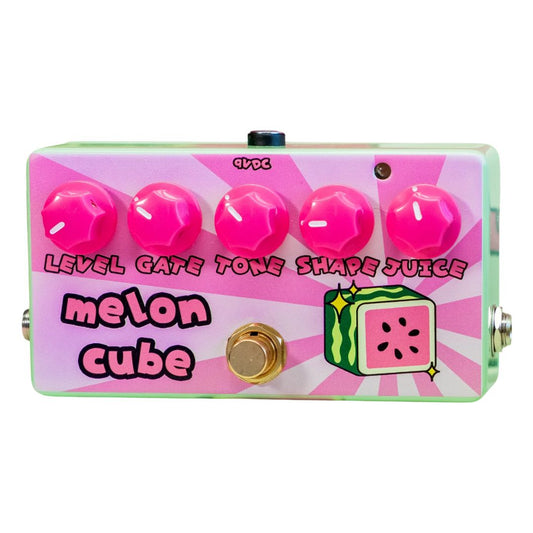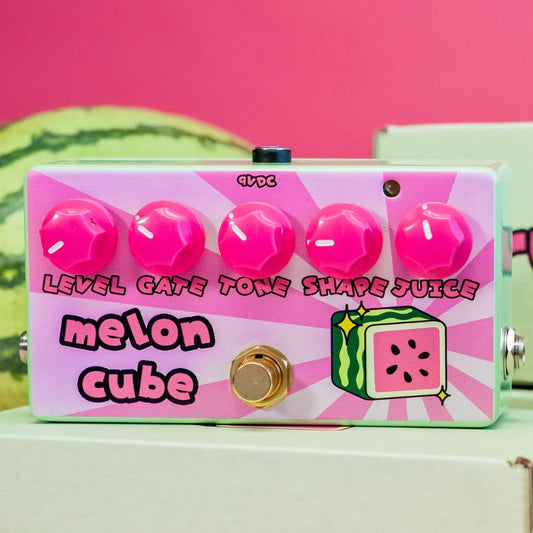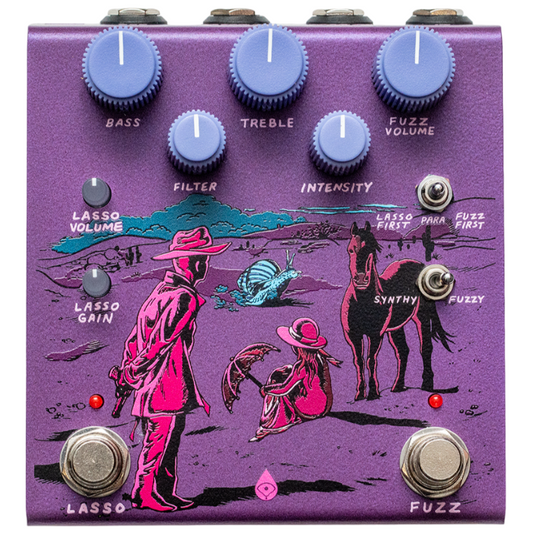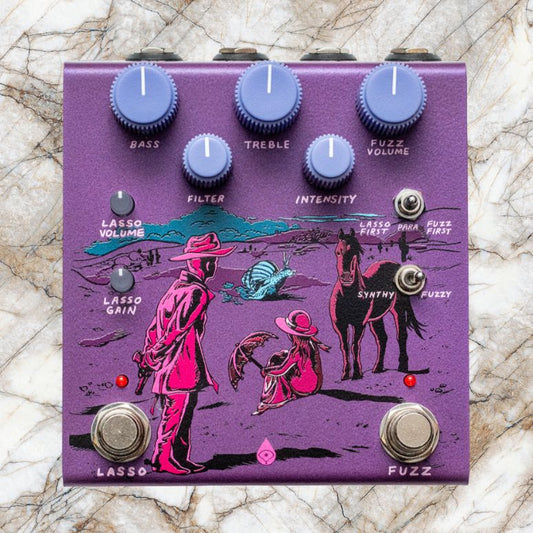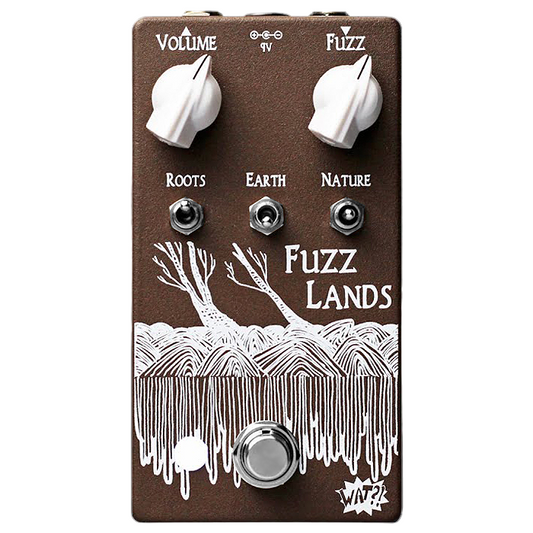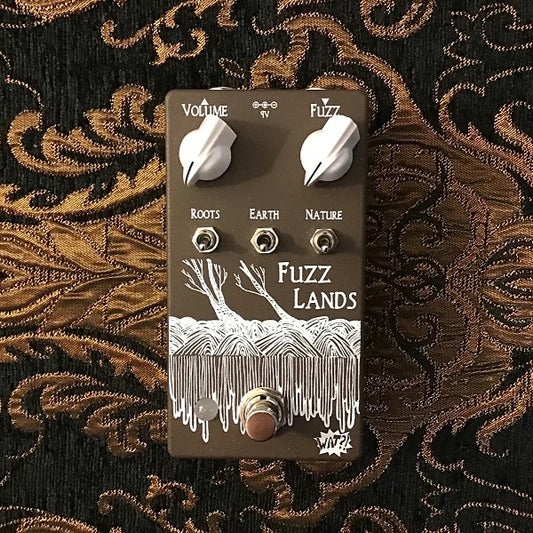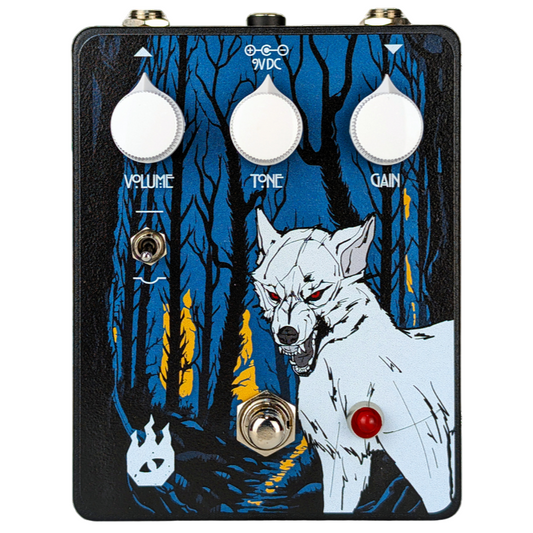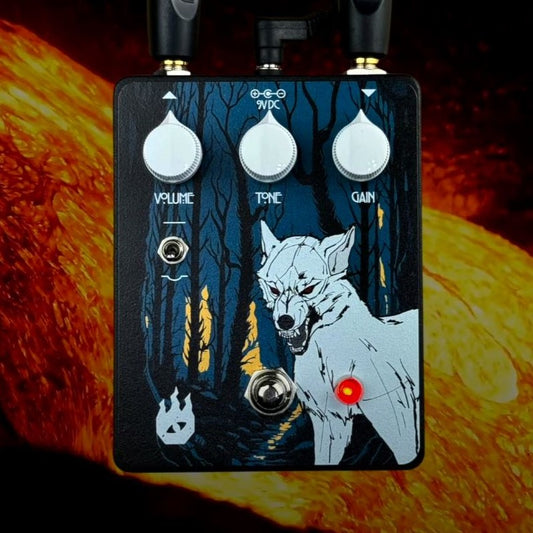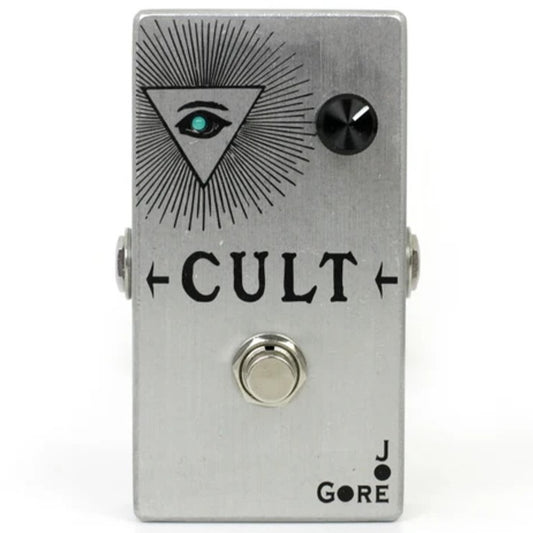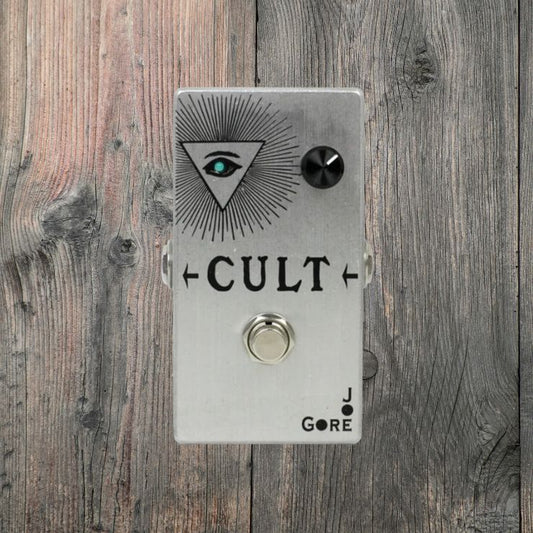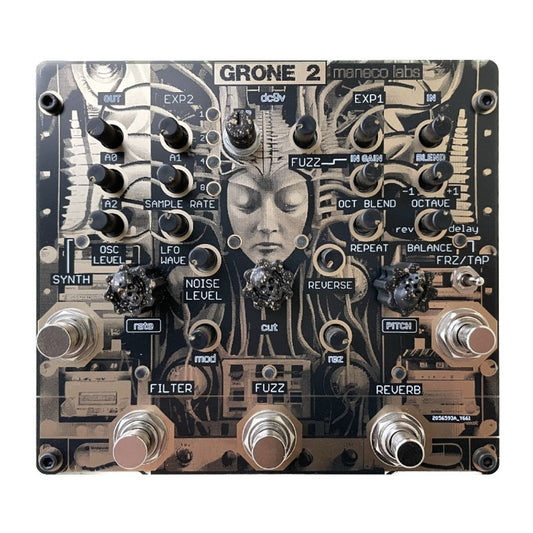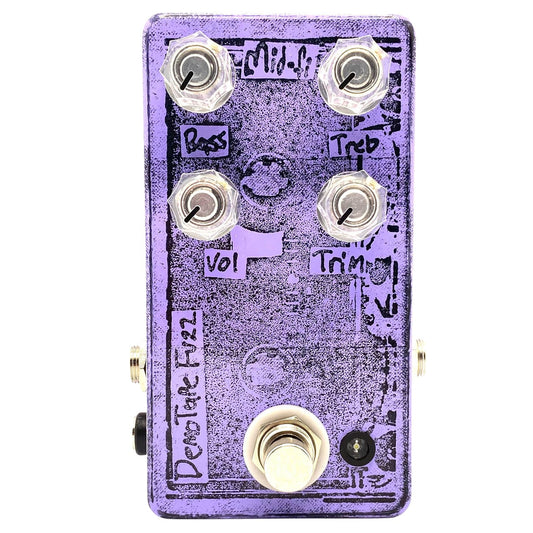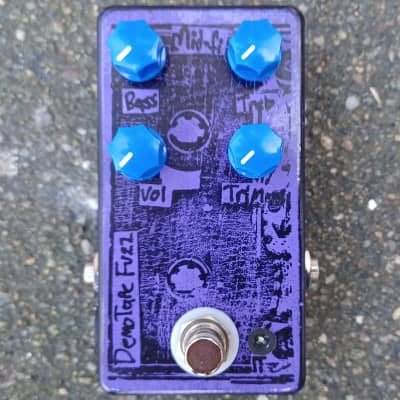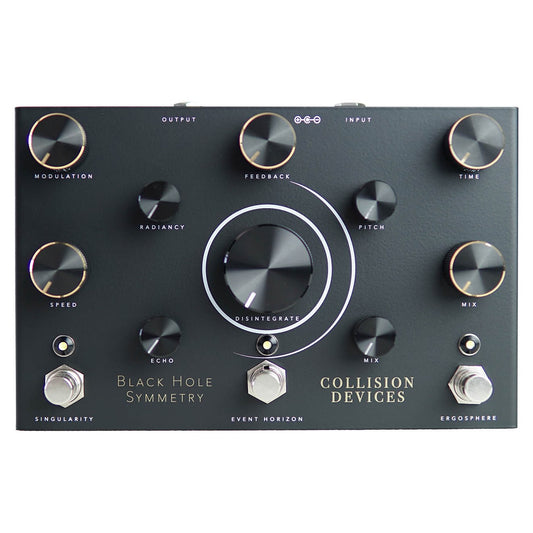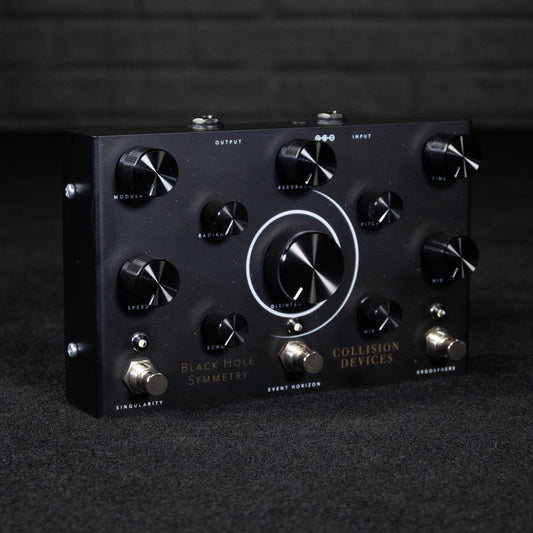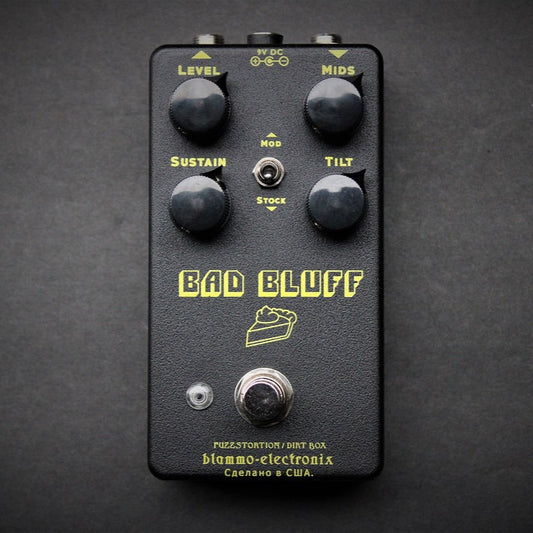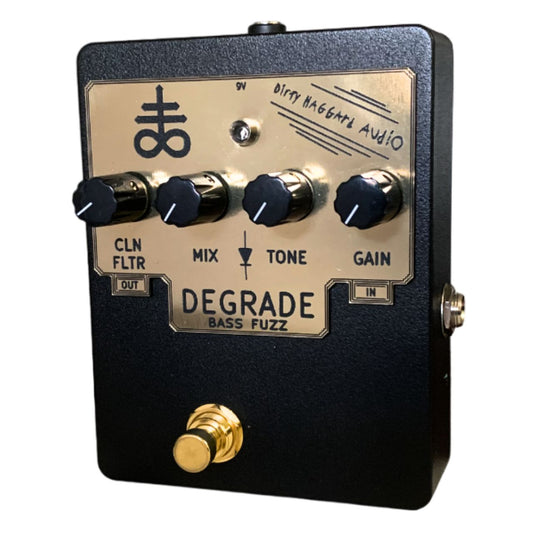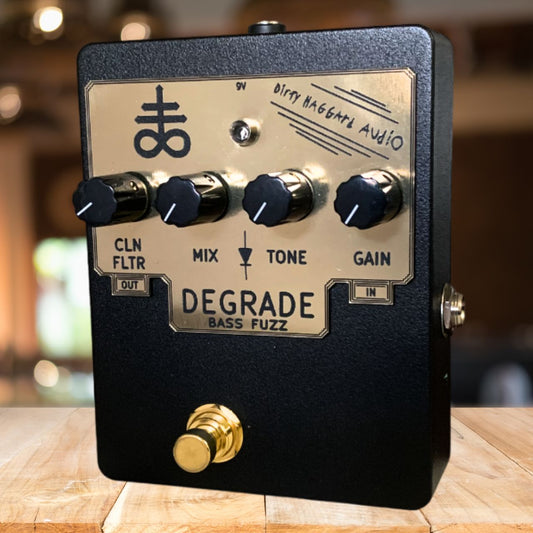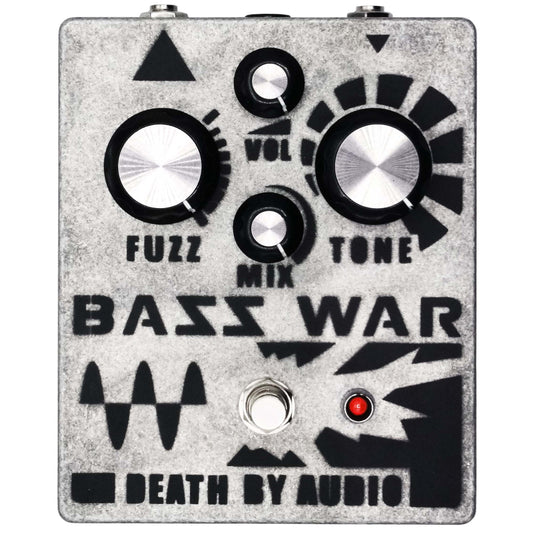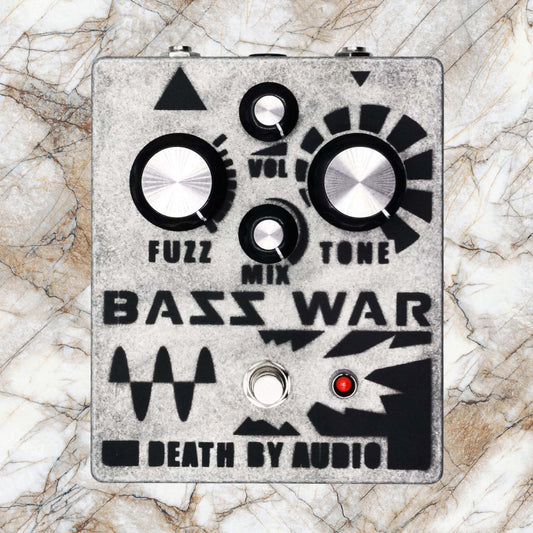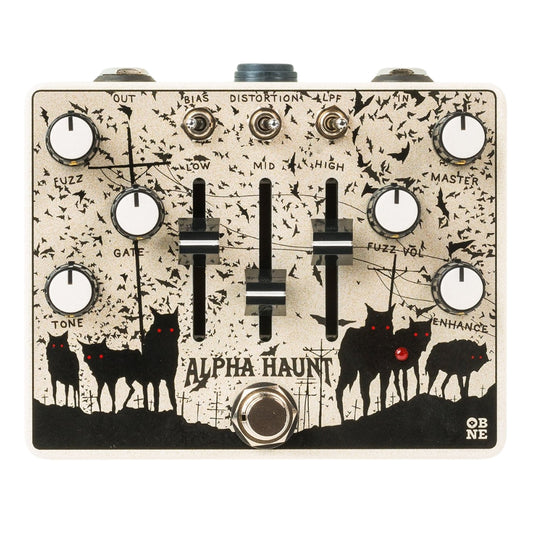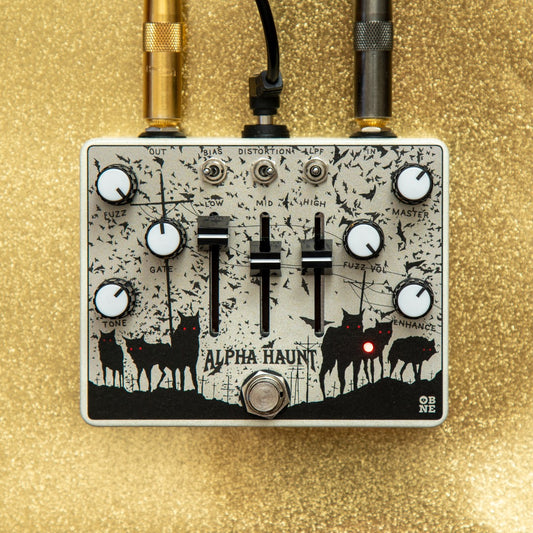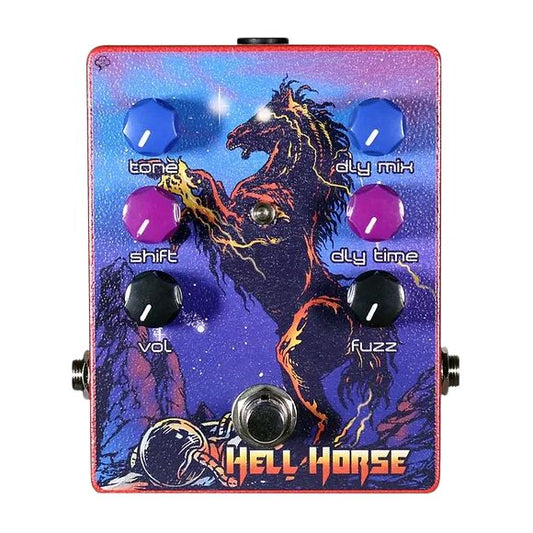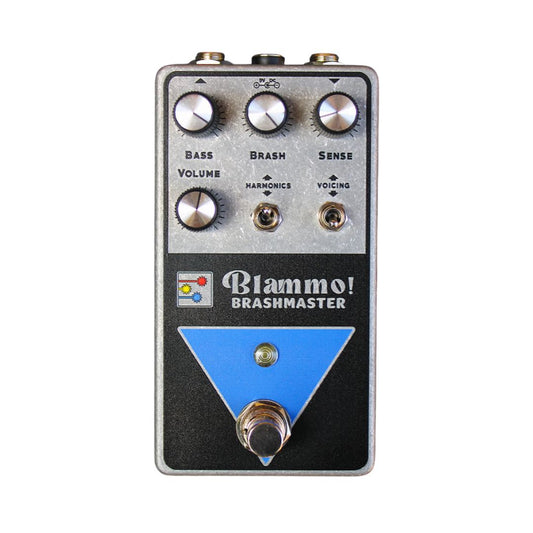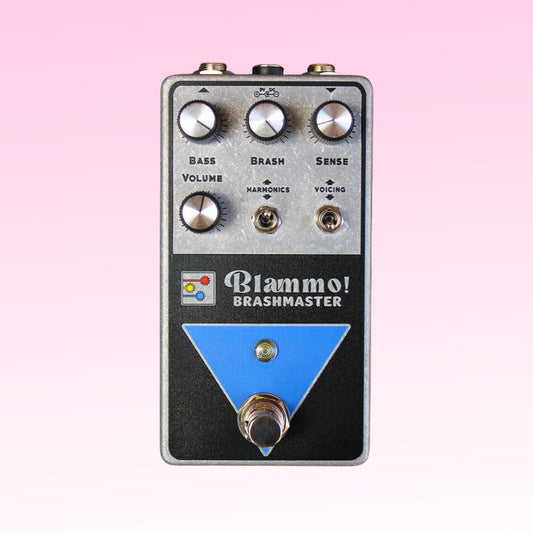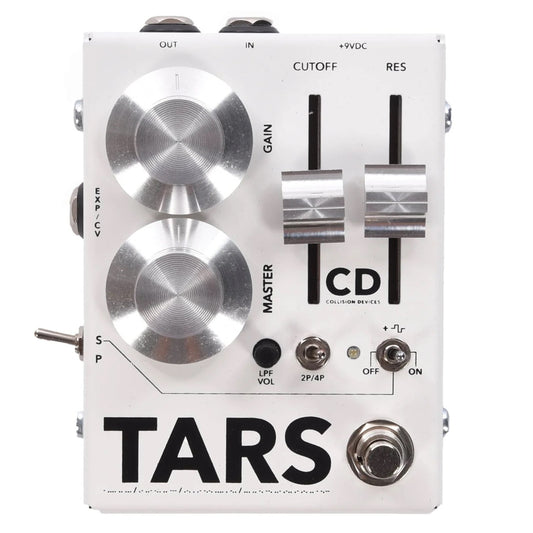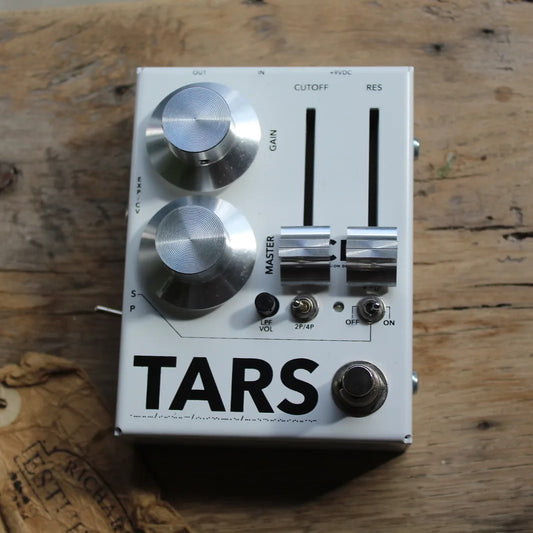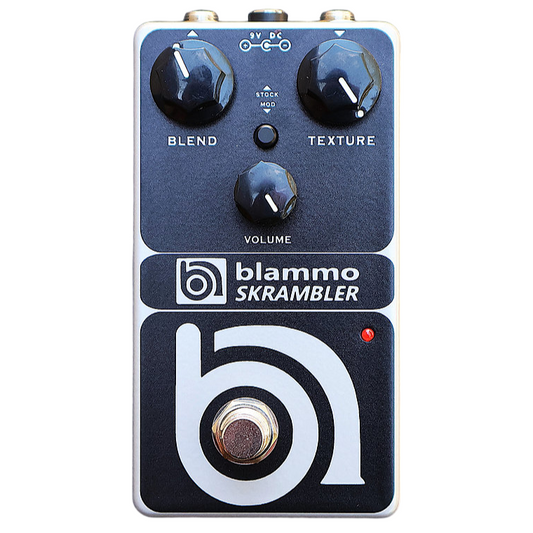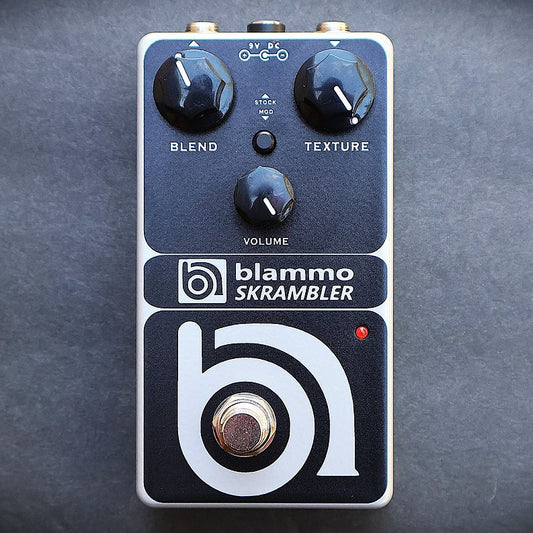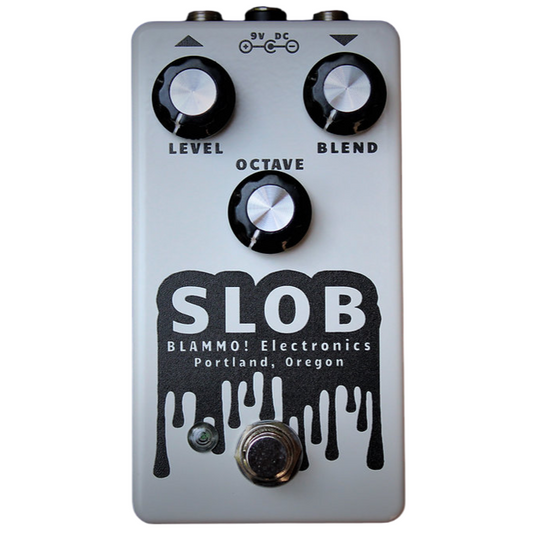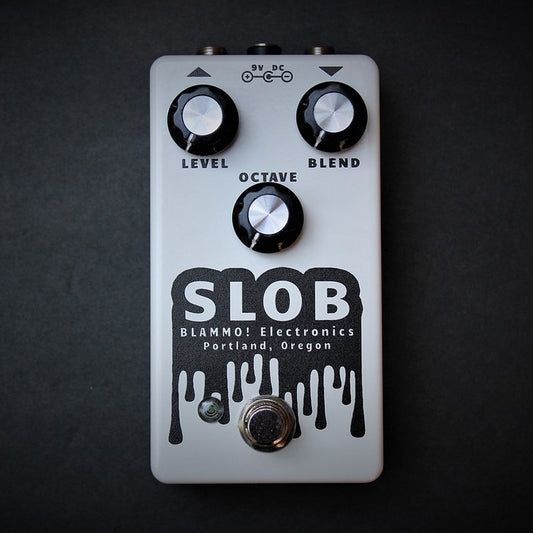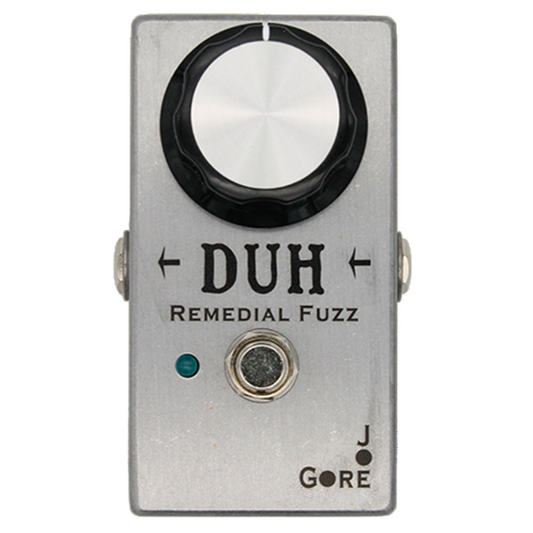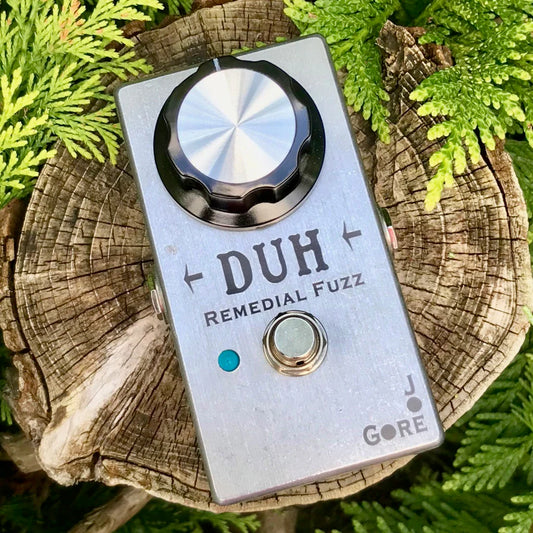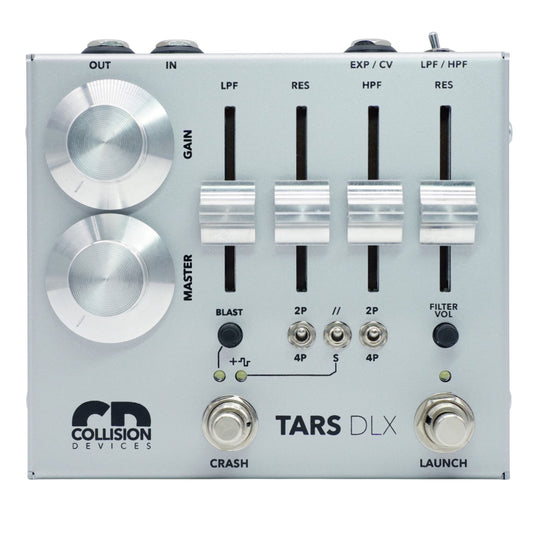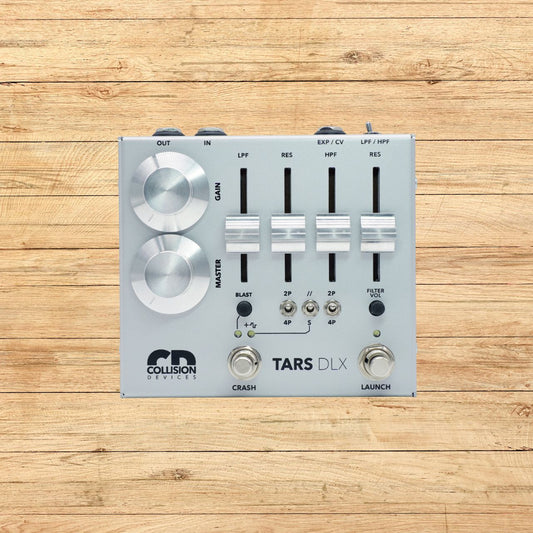Fuzz Pedals
-
FruitFX Melon Cube Pedal
6 reviewsRegular price From $139.99Regular priceUnit price / per -
OBNE Pardner Fuzz Pedal
12 reviewsRegular price $229.00Regular priceUnit price / per -
WAT?! Fuzz Lands Pedal
9 reviewsRegular price $190.00Regular priceUnit price / per -
Evil Eye FX Warg Pedal
1 reviewRegular price $149.00Regular priceUnit price / per -
Joe Gore Cult Germanium Overdrive Pedal
1 reviewRegular price $189.00Regular priceUnit price / per -
Maneco Labs Grone 2 Pedal
3 reviewsRegular price $465.00Regular priceUnit price / per -
Mid-Fi Electronics Demo Tape Fuzz Pedal
2 reviewsRegular price $225.00Regular priceUnit price / per -
Collision Devices Black Hole Symmetry Pedal
1 reviewRegular price From $390.00Regular priceUnit price / per -
BLAMMO! Bad Bluff Pedal
1 reviewRegular price $159.99Regular priceUnit price / per -
Dirty Haggard Degrade Pedal
5 reviewsRegular price $135.00Regular priceUnit price / per -
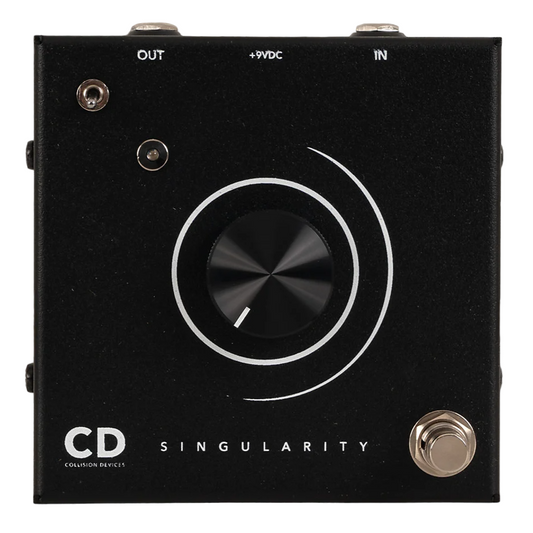
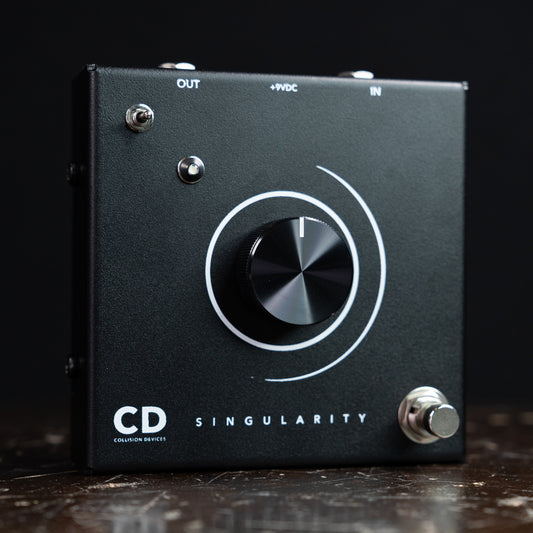 Sold out
Sold outCollision Devices Singularity Pedal
No reviewsRegular price From $119.00Regular priceUnit price / per -
Death By Audio Bass War Pedal
No reviewsRegular price $195.00Regular priceUnit price / per -
OBNE Alpha Haunt Pedal
No reviewsRegular price $229.00Regular priceUnit price / per -
Dirty Haggard Hell Horse Pedal
3 reviewsRegular price $140.00Regular priceUnit price / per$145.00Sale price $140.00$5 off -
BLAMMO! Brashmaster Pedal
1 reviewRegular price $179.99Regular priceUnit price / per -
Collision Devices TARS Pedal
No reviewsRegular price From $390.00Regular priceUnit price / per -
BLAMMO! Skrambler Pedal V2
No reviewsRegular price $154.99Regular priceUnit price / per -
BLAMMO! SLOB Pedal
1 reviewRegular price $149.99Regular priceUnit price / per -
Joe Gore Duh Remedial Fuzz Pedal
2 reviewsRegular price $189.00Regular priceUnit price / per -
Collision Devices TARS DLX Pedal
No reviewsRegular price From $449.00Regular priceUnit price / per
Collection: Fuzz Pedals
What does a Fuzz Pedal do?
If you’re seeking that gnarly, hairy, and distorted guitar tone, you should look into getting yourself a fuzz pedal.
The fuzz pedal is an effect unit that is well-known for adding thickness to an instrument’s tone by heavily saturating it with distortion. This unique fuzzy tone generates sustain and harmonics that add character to guitar lines, making solos and riffs stand out with an intense and gritty roar.
Fuzz pedals are widely used in genres like rock, psychedelic, and shoegaze as they offer a memorable and unmistakable sonic experience to any listener.
How do Fuzz Pedals Work?
Fuzz pedals achieve their signature crunchy tone by clipping your guitar’s signal.
This works by amplifying the peaks of your instrument’s audio signal going through the pedal until they clip, which adds harmonics that emit the popular saturated fuzzy tone. There are various transistors or diodes inside the pedal’s circuitry to amplify the audio signal to intentionally distort it.
Unlike distortion or overdrive pedals that produce smooth, slightly driven tones, fuzz pedals aggressively distort and compress your signal to get the harmonically rich and gnarly sound it’s famous for.
Most of today’s fuzz pedals have parameters for gain, tone, and level, allowing musicians to dial in the right amount of fuzz. The versatility of this effect lets you shape it to go from subtle warmth for added thickness to extremely dirty tones that cut through the mix.
History of the Fuzz Pedal
From as early as the 1960s, guitarists were already looking for ways to get distinct and distorted tones. During that time, musicians used to poke holes in their amplifiers while cranking up the volume to achieve the grit they were seeking.
By 1962, the Maestro FZ-1 Fuzz-Tone was released. It was one of the first commercially available fuzz pedals that gave artists an easier way of creating that distorted effect without sacrificing any amplifier. The popularity of the effect gave birth to more iconic fuzz pedals like the Arbiter Fuzz Face and Electro-Harmonix Big Muff.
Over the decades, more musicians have used the effect which helped revolutionize the sound of rock, blues, and alternative music. Up to this day, the fuzz pedal is still a go-to among artists looking to add nasty grit to their sonic landscapes.
Where to put a Fuzz Pedal in the Chain?
Not only is a fuzz pedal versatile on its own, but it also proves its flexibility wherever it is placed in the pedal chain.
- First in the Chain: Having it first in the chain allows it to get the cleanest audio signal from your instrument, providing you with a more in-your-face, raw fuzz guitar tone. Musicians usually put the effect first if they’re aiming for a straight-up fuzzy tone that goes through the rest of the chain.
- After a Wah Pedal: Placing the fuzz after a Wah pedal can get you interesting tones. The wah can act as a tone filter to shape your guitar’s signal before it hits the fuzz, giving you an expressive approach to playing with the distorted tone.
- Before or After Overdrive/Distortion Pedals: Playing around with the order of the distortion, overdrive, and fuzz pedals in your signal chain can create a variety of tonal landscapes. Depending on where you stack the fuzz within the dirt chain will influence the texture and gain structure of your guitar tone.
- Before Modulation and Time-Based Effects: You can create inventive soundscapes by having your fuzz interact with modulation pedals or time-based effects. For instance, having both a fuzz and a flanger on can result in unique, roaring swirls. You can even use a fuzz before a delay or reverb pedal to create saturated trails that intensify the atmosphere of your music.
- Last in the Chain: If you want your fuzz to shape the overall tone of all your effects, you can place it at the end of your signal chain. The rest of the pedals in your chain can create quirky sonic tones as they go through the fuzz pedal.
There is no right or wrong way when putting a fuzz pedal in your signal chain. It all boils down to personal preference. Experiment with different pedal orders to find the perfect tone that works best for your playing style.
How to Make a Fuzz Pedal?
If you’re planning to build a fuzz pedal, keep in mind that it involves a good understanding of electronics, knowledge of basic circuitry, and soldering skills. This is just a basic overview of how to build a simple fuzz pedal.
Prepare by getting a schematic of the fuzz pedal you’re going to build to identify the components you need. These usually include parts such as resistors, capacitors, potentiometers, transistors, an enclosure, a switch, and a circuit board. You’ll also need tools and materials such as a soldering iron, solder, drill, wire strippers, wires, input and output jacks, and a 9V battery or power supply.
Once everything is settled, you can start your build.
- Read the Schematic: Carefully read the schematic of the fuzz pedal you’re about to build. If it’s a kit, make sure to read and understand the instructions provided. Start identifying each component and know its placement on the circuit board.
- Prepare the Pedal’s Enclosure: Start preparing the enclosure of your new fuzz pedal. Some kits provide enclosures with ready-made holes. But if your enclosure is bare, start drilling holes for the input and output jacks, footswitch, potentiometers, LED, and power jack. You can follow the layout provided on the schematics, or create your personal layout. This is also the best time for you to paint or design the enclosure before putting all the components in it.
- Assemble the Circuit Board: You can start soldering the components onto the circuit board according to the schematic. It’s best to start with the lowest-profile components and then work your way up.
- Connect the Components: Once you’re done assembling the circuit board, use wires to connect the different components. Make sure to follow the diagram as you go.
- Mount the Circuit Board: You can now mount the finished circuit board into the enclosure. Ensure that it sits well inside the enclosure. Be careful not to let it touch any metal parts.
- Add the Jacks and Switch: Start soldering wires to the footswitch, input jack, and output jack. Use the schematic as a guide to know where to connect them to the circuit board.
- Add Potentiometers: Add the potentiometers by connecting them to their respective placements on the circuit board. Just follow the schematic for your build.
- Add the Power Supply: Connect the power supply jack or 9V battery clip to the circuit board as indicated in the build guide.
- Take it on a Test Drive: Once you’re done building the fuzz pedal, give it a test drive before closing the enclosure. This allows you to guarantee that the pedal works properly. Troubleshoot any type of issue you encounter.
- Finalize the Assembly: If everything works as intended, carefully close the enclosure while keeping all components secured. Now, you have built your new fuzz pedal.
Building pedals can be daunting if you have no experience working with soldering irons and electricity, so take the necessary safety precautions. You can always start with a simpler pedal schematic to gain experience before moving on to more complicated builds.
Why You Need a Fuzz Pedal
No matter the type of music you play, a fuzz pedal’s versatility guarantees that it has a setting that will work best with your style. It will keep your creative juices flowing with the different tones you can achieve as you play with it.
If you want your rhythm parts to stay beefy and gritty, you can trust that a fuzz pedal will provide you with the thickness you are looking for. You can even enhance your guitar riffs and solos with the added sustain and harmonics of a fuzz pedal, ensuring that your playing cuts through the mix.
Having a fuzz pedal in your rig is like having a secret weapon. You are guaranteed to have that extra edge during any live performance or studio recording.
Where to Buy Fuzz Pedals
At DeathCloud, we carry a wide catalog of premium-quality fuzz pedals from the top guitar pedal brands. Whether you’re a touring musician or a bedroom guitarist, we ensure that you’ll find the best fuzz pedal for your pedalboard. We guarantee you a memorable and stress-free shopping experience here at DeathCloud.

